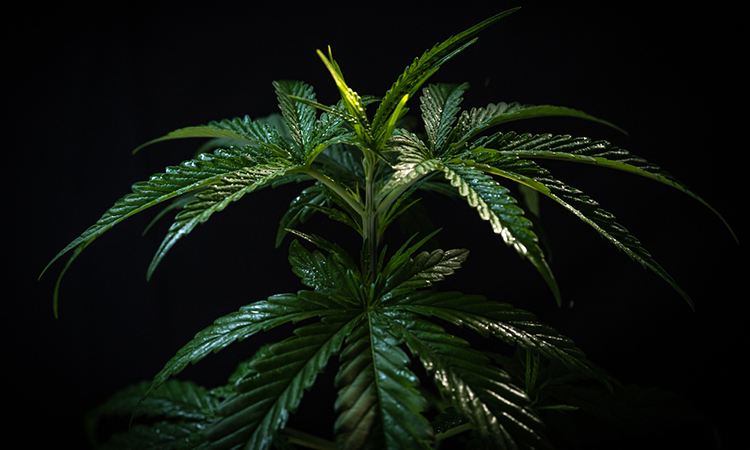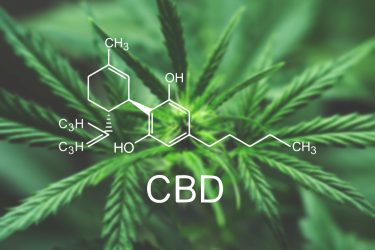Cannabinoid series: a CBD-inspired molecule to increase bioavailability
Posted: 26 November 2020 | Victoria Rees (European Pharmaceutical Review) | No comments yet
European Pharmaceutical Review spoke with Dean Petkanas from Neuropathix, formerly known as Kannalife, to find out why a CBD-inspired molecule can offer an improved therapeutic value.


While the medicinal benefits of cannabidiol (CBD) are becoming increasingly understood, researchers have found its bioavailability is fairly low. This has prompted scientists to investigate ways to improve the molecule’s efficacy, by changing its formulation or in some cases, developing a similar compound.
European Pharmaceutical Review’s Victoria Rees spoke with Dean Petkanas, Chairman and Chief Executive Officer from Neuropathix, to discover how the company developed its CBD-inspired molecule and what its potential therapeutic benefits are.
Petkanas explained that when the researchers at Neuropathix studied CBD in a pre-clinical animal model for a specific oxidative stress-related disease, called overt hepatic encephalopathy, they found that there were pharmacokinetic and pharmacodynamic limitations. With cirrhosis of the liver in in vitro models, he said that CBD would not pass regulatory review. This is what inspired them to make their novel patented compound that is like CBD but is derived from the original structure of CBD.
Benefits of the CBD-inspired molecule


To resolve this discrepancy, Neuropathix synthesised their proprietary molecule, KLS-13019. In a scientific study, the researchers compared the compound CBD and KLS-13019. They found that their compound had a bioavailability of 67 percent versus CBD’s eight percent. Therefore, they were able to increase the chances of their CBD-inspired molecule successfully reaching its target by 80 percent. They also showed that it was five times safer than CBD in a pre-clinical model.
Furthermore, the potential for liver toxicity was reduced with the CBD-inspired molecule. This was due to the formulation of the molecule, which was more aqueous and water soluble, potentially allowing better clearance of the product in the liver.
Two further peer-reviewed papers revealed the mechanism of action of KLS-13019. Petkanas said that one of these is a sodium calcium exchange rheostat or pump known as mNCX-1 which is found in the mitochondria. This upregulates or downregulates calcium in neurons, which is critical for maintaining their health. “Mitochondria dysfunction is a big target for pharma because these organelles are important for ATP synthesis and energy and cell homeostasis,” said Petkanas.
…the market for CBD and especially CBD-inspired molecules is highly promising”
As chemotherapies can frequently cause an imbalance of calcium in mitochondria, it is important to ensure the health of mitochondria following treatment. In pre-clinical models of chemotherapy induced peripheral neuropathy (CIPN), KLS-13019 was shown to successfully prevent the condition. They found that with CBD, while both CBD and KLS-13019 prevented the onset of neuropathic pain caused by chemotherapy, only KLS-13019 was able to reverse this. Administered at 5mg per kilo of body weight, KLS-13019 beat out morphine at 20mg per kilo of body weight. Hence, the researchers also showed that the compound was more effective than morphine in reversing chemotherapy induced peripheral neuropathy in the animal model.
Next steps
The researchers behind KLS-13019 have also developed several backup compounds that could be potential leads if KLS-13019 fails at any stage. These can all be scaled up both in-house and through third parties as it ensures their supply should they need to focus on any of the other compounds.
However, Petkanas remarked that he feels confident their current product will soon be able to enter Phase I. Before this, an additional round of optimisation will be conducted, then tested in an animal toxicity model and subsequently in a model of CIPN. He predicts that after this, in the middle of next year, they will be able to initiate a pre-investigational new drug (IND) meeting. By the end of 2021, Petkanas hopes they will be ready to go to the clinic and begin patient registration.
The road to CBD development
The biggest problem the company faced was raising capital and convincing the market to invest, Petkanas said, especially as they are not a cannabis or CBD company. However, he emphasised that “there is a path forward from a science-based data-driven perspective… Having made it through the initial development, the market should embrace what we are doing by next year.”


Overall, Petkanas sees CBD being used as part of combination therapies. Due to its low bioavailability, no matter what formulation it is in or how it is delivered, it needs to be improved. One solution to this, he said, is to use a CBD-inspired molecule: “We looked at it completely independently and came to the conclusion that the derivative side of the marketplace might be the best place to be.”
Read our previous instalment in the Cannabinoid series by clicking here.
Related topics
Biopharmaceuticals, Bioproduction, Cannabinoids, Drug Development, Medical Marijuana, Preclinical Research, Research & Development (R&D)
Related organisations
Related drugs
Related people
Related diseases & conditions
chemotherapy induced peripheral neuropathy (CIPN), overt hepatic encephalopathy









